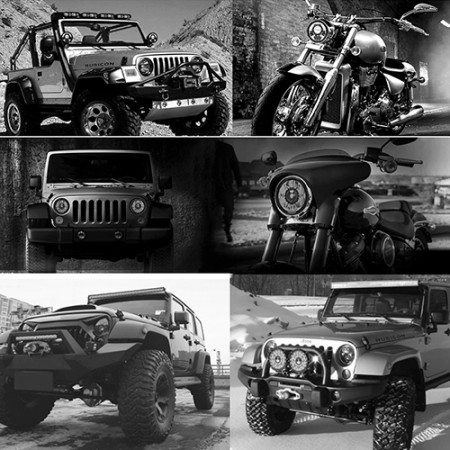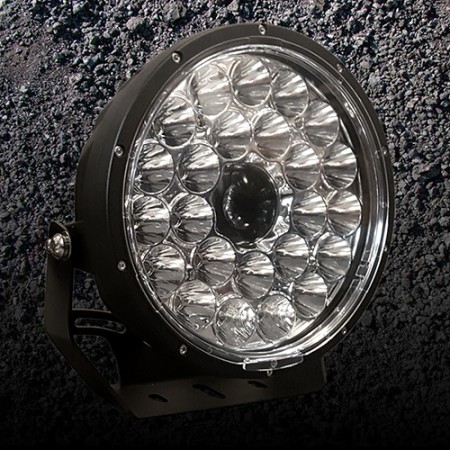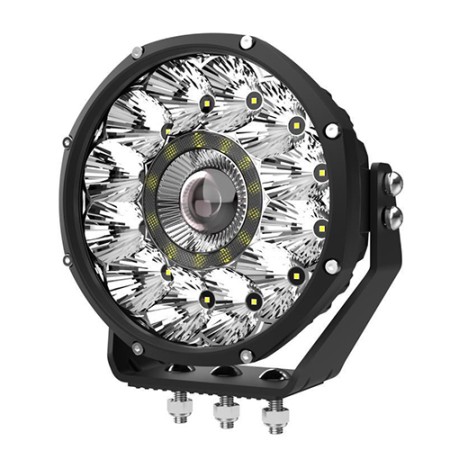Laser Driving Lights

LASER Driving Lights – Everything You Need to Know.
The latest in advanced engineering for the off-road lighting industry are the Hybrid Laser + LED Driving Light/Spotlight technology.
Laser technology make a massive improvement to the amount of distance you can get out of your spot-beam light, (around 2000mtrs), and the led's around the lights give you a spread of light across each side of the road.
The laser driving light are available in a 7 inch and a 9 inch to suit a wide range of bull bars, and the light comes with everything you need for easy fitting.
The latest in driving enthusiast auxiliary lighting has just arrived! Enjoy!
Are Laser Driving Lights and Spotlights Safe for the Eyes?
In short, yes. The Pro Vision Lighting Laser Driving Lights and Spotlights are certified FDA EN 62471 approved, ( “laser illuminated projector” (LIP) ), to comply with the safety standards required for laser products that are used in indoor or outdoor cinema theaters, laser shows, presentations at conventions, asimage/data projectors in an office setting, or in a home, or in this case for auxiliary driving lights, so that they are non-harmful to your eyes, (their optical design ensures that the beam of light does not dazzle or cause glare for other drivers).
Why are they Still using LED's with them?
As mentioned before, the laser part of the light is a spotlight type of beam to generate an enormous amount of beam distance, while the led's, (Top Bin German Made OSRAM LED's), are specifically engineered and seated in precision reflectors to light up the sides of the road for a better and safer field of vision while driving at night.
What are the Benefits on using the Laser Driving Lights compared to halogen, HID, or LED?
Laser lights are approximately four times brighter than led and and have around twice the amount of efficiency, (this is being conservative).
The benefits of integrating laser technology into auxiliary driving lights is that they generate an extremely high luminosity giving you a much longer visual array of Distance + the added visual area of width with the led's.
Compared to halogen and HID. To halogen, the are brighter, give better clarity of vision, last longer, and are more stable. Compared to HID, they are more stable, last longer, and will give you much more distance.
Are They Waterproof?
The Pro Vision Laser Driving light is IP68 water and dust-proof rated so that you can use them in a wide range of environments.
Whether you are in high or low altitudes, tropical or dry climates, the environmental protection for the laser light is built to handle any adventures you want to take them on.
What about Shock-proofing for the Laser Lights?
Each driving light is built tough to withstand vibration and jarring.
Polycarbonate lenses, heavy duty bracket assemblies, a heavy duty lightweight housing, and vibration protected components inside the light ensure that no matter what rough terrain you take the lights through that they will stand up to anything that you can throw at them.
Do They need a Special Relay Harness?
The laser lights are electrically designed for 12v and 24v integration and will work with standard 12v or 24v relay harnesses, the low current draw/high output of the lights ensures that a standard 30amp 12v relay harness is sufficient to run the lights.
The laser driving lights are also have a free 12v relay harness available if you need it, or are easily interchangeable into an existing harness to upgrade your lights if you prefer.
Note*** By law, we always advise you to get an auto electrician to fit the lights and check the ampere compatibility and switching system for best results.
What Colour Temperature are the Laser Driving Lights?
The laser + led driving lights are around 5500k-5700k pure white, (Lasers utilize phosphor to get the pure white colour). This is around midday sunlight, and from what modern science tells us, this colour temperature is the best light that our eyes have evolved to, to best see the contrast of objects.
Keep in mind, everyones' eyes are different, and react differently to different colours, but technically speaking, the colour temperature of our laser driving lights/spotlights are the best colour temperature for you to be able to see clearly with at night.
Can i use them on Main Roads?
At this time we are classifying them all as suitable for "off-road only" use, as with new technology, we cannot guarantee them as ADR approved as the vehicle would have to get an engineering certificate in your state, and to our knowledge, none exist yet. Check out the following link for one of the better explanations we have seen concerning auxiliary lighting rules and regulations ->Auxiliary Lighting Guidelines.
 Login
Login Register
Register


